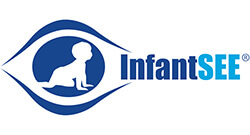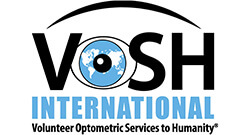Making the Grade
Vision Gets an A+ for School Aged Children
A good education for your child depends on good schools, good teachers and good vision. Your child’s eyes are constantly in use in the classroom and at play. If vision skills are not functioning properly, your child may struggle in school. Of the five senses, sight is the one you can work to protect through everyday actions. By developing good habits, having regular examinations, and educating yourself about the eyes, you can ensure that you child will reach his or her potential.
The “Basic Skills” of vision that are needed in order to see and learn well include:
- Near vision. The ability to see clearly and comfortably when reading or working at a computer.
- Distance vision. The ability to see clearly and comfortably beyond arm’s length – things like the board, projected materials, or even television.
- Eye teaming. The ability to use the eyes together as a team.
- Eye movement skills. The ability to aim the eyes accurately, move them smoothly across the page and shift them quickly and accurately from one object to another.
- Focusing skills. The ability to keep both eyes accurately focused at the proper distance to see clearly and to be able to change focus quickly from board to the desk and back again (as is required for copying activities and notetaking).
- Hand/eye coordination. The ability to use the eyes and hands together for activities such as writing, drawing, running, jumping and playing.
Signs and Symptoms
If your child has a vision problem, he or she may exhibit one or more of these signs and symptoms:
- Frequently losing their place while reading or relying on a finger to keep their place while reading
- Avoidance of close work like reading, drawing or coloring
- Holding reading material closer or farther away than normal
- Eye rubbing, red eyes or styes
- Frequent headaches or complains of fatigue, particularly after reading or close work
- Tilts or turns head to read or covering one eye when reading
- Omits or confuses small words while reading
- Complains that lighting is too bright or too dim
- May exhibit academic underachievement
- Complaints of difficulty seeing the board
- Squinting or frowning when trying to see at a distance
- Blurring or double vision while reading or writing
What Parents Can Do to Promote Healthy Vision?
Provide a well lit, comfortable area for reading and homework. Encourage your child to take periodic breaks to rest his or her eyes when reading, working on the computer or playing video games. Make sure your child views the TV from a distance of about 6 – 8 feet or approximately five times the width of the screen away. It is important to remember to wear appropriate eye protection in activities at school and play where there is a risk of eye injury.
Be sure your child’s time away from school includes time for active visual motor activity and creative play to help his or her vision skills function properly – get out and play!.
Vision Facts
- One in four children experience vision problems.
- Children may not realize that the way they see is not normal or that their vision is changing.
- An optometrist or ophthalmologist is best qualified to treat conjunctivitis (pink eye) or any eye injury or infection.
- Chronic headaches and behavior problems may mean a child has an undiagnosed vision problem.
- Children accomplish 80% of all learning through sight up through age 12.
School Screenings
Having “Good Vision” means much more than just the ability to read 20/20 letters on an eye chart. School based vision screenings that have appropriate referral and follow up procedures in place do serve a purpose for children who may have certain types of vision problems. To fully assess the health of your child’s visual system and reduce the risk of future learning problems associated with undetected vision problems, regular professional eye examinations by an optometrist or ophthalmologist are recommended. As part of your “back-to-school” preparations, it is recommended that you take your child to an optometrist or ophthalmologist for a complete eye health examination. The first eye exam should be at age three, followed by an exam at age five and then every two years thereafter unless more frequently indicated. The comprehensive eye health exam should include: a review of your child’s health and vision history and an evaluation of their visual acuity, determination of any refractive error such as nearsightedness, farsightedness, astigmatism or amblyopia (lazy eye), testing of eye coordination, focusing ability, depth perception and eye muscle movement control as well as a thorough assessment of their eye health status.

